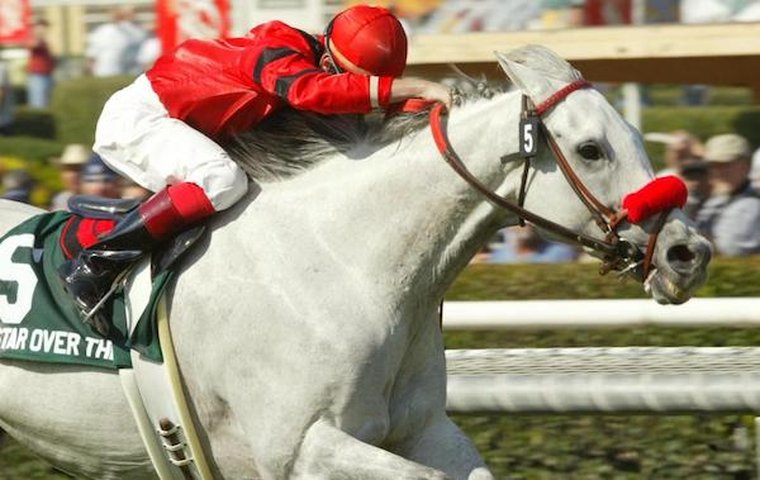
Our unmissable series continues with the tale of a popular front-runner who rose from virtual anonymity to G1 success – only to meet a shockingly grisly end on a trip to Singapore
The Republic of Singapore is a city state located just off the southern tip of the Malay peninsula. There are swanky hotels and fine restaurants and squeaky clean streets that attract tourists from all over the world. One of the prime attractions is the Singapore Zoo, with its 15,000 animals representing a thousand species. Another has been the Singapore Turf Club, located just a few miles northwest of the zoo and featuring a modern grandstand built in 1999.
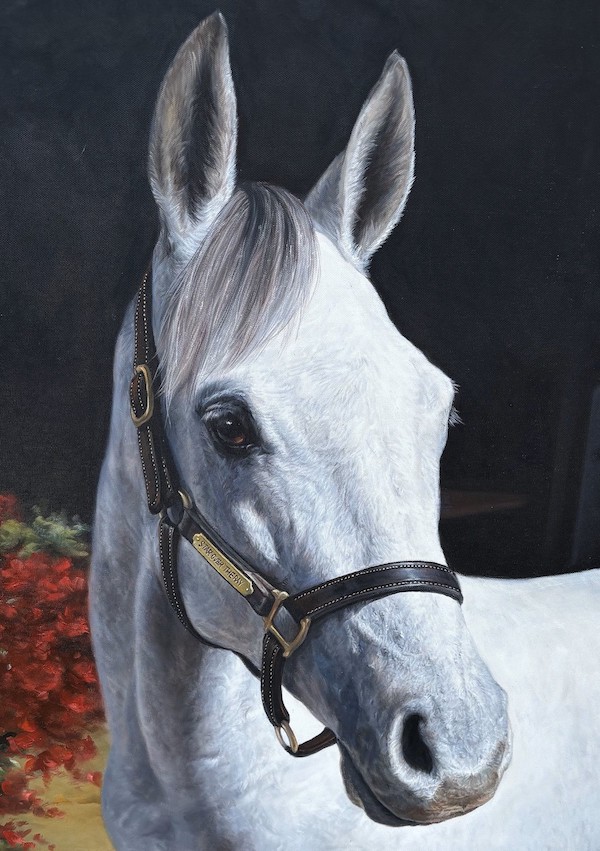 Unfortunately, the government’s investment in Thoroughbred racing has gone sour, and the Singapore Turf Club will be out of business after its meeting in October 2024. As a result, the place where this story comes to an end soon will no longer exist, as if lost in a bad dream.
Unfortunately, the government’s investment in Thoroughbred racing has gone sour, and the Singapore Turf Club will be out of business after its meeting in October 2024. As a result, the place where this story comes to an end soon will no longer exist, as if lost in a bad dream.
The Thoroughbred named Star Over The Bay rose from virtual anonymity to become a rising star in Southern California, where reinvention in a climate of dry summers and firm turf has helped many a racehorse find a second act.
He was a big, vibrant beast who flashed like a comet across the western sky in 2004, winning three of the most significant grass races of the season with an audacious display of front-running style that was reminiscent of the great mare Pink Pigeon, a popular personality of the late 1960s.
Winging on a long lead
And while he ended his career with just 10 wins from 43 starts, it was the final year of his life that Star Over The Bay soared to exciting heights – the white horse out there winging on a long lead, daring the rest to follow and then fighting tooth and nail when the opposition inevitably came to challenge.
“There’s not a day that goes by I don’t think about him,” said Sean Gerson, who raced Star Over The Bay with a large collection of partners dressed in their red stable colors when he ran, like rabid fans of a Big Ten team.
In terms of family connections, Star Over The Bay was hardly a fluke. His dam, Lituya Bay, was a foal of 1990 bred and raced by Aaron and Marie Jones and trained by Lazaro Barrera.
In her fourth start, Lituya Bay won a maiden race at Saratoga, always a good credential. She then went west for the Oak Leaf Stakes at Santa Anita and ran squarely into the freakish Landaluce, so her fourth-place finish was hardly embarrassing.
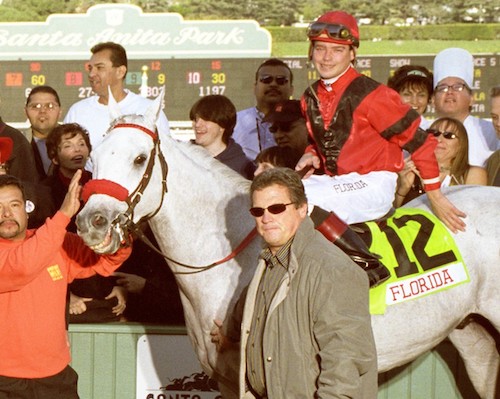 That December, Lituya Bay took the Turkish Trousers Stakes at Hollywood Park for a piece of black type, after which she required a six-month break before coming back as a three-year-old to win the San Clemente Stakes on the grass at Del Mar.
That December, Lituya Bay took the Turkish Trousers Stakes at Hollywood Park for a piece of black type, after which she required a six-month break before coming back as a three-year-old to win the San Clemente Stakes on the grass at Del Mar.
A lot of family
Lituya Bay also brought a lot of family to the party. She was a daughter of Empery, a son of Vaguely Noble who won only two of his eight starts, but one of those wins came in the 1976 Epsom Derby.
Her dam, Reason To Please, never raced but didn’t really have to. She was a full-sister to Bold Reasoning, the sire of Seattle Slew. A few generations earlier, the female side could lay claim to Belmont Stakes winner Bounding Home.
Lituya Bay raced once at four before retiring to the breeding shed for the Joneses, where she produced one modest winner before being sent through the 1988 Keeneland November sale. Jeff Schwietert, who was ramping up the breeding operation at his family’s Four Horsemen’s Ranch in Ocala, Fla., grabbed Lituya Bay for $27,000.
It was a steal. Lituya Bay’s first seven foals for Four Horsemen’s were winners, beginning with Lord Of The Bay, who took the 1992 Laurel Futurity and World Appeal on the grass.
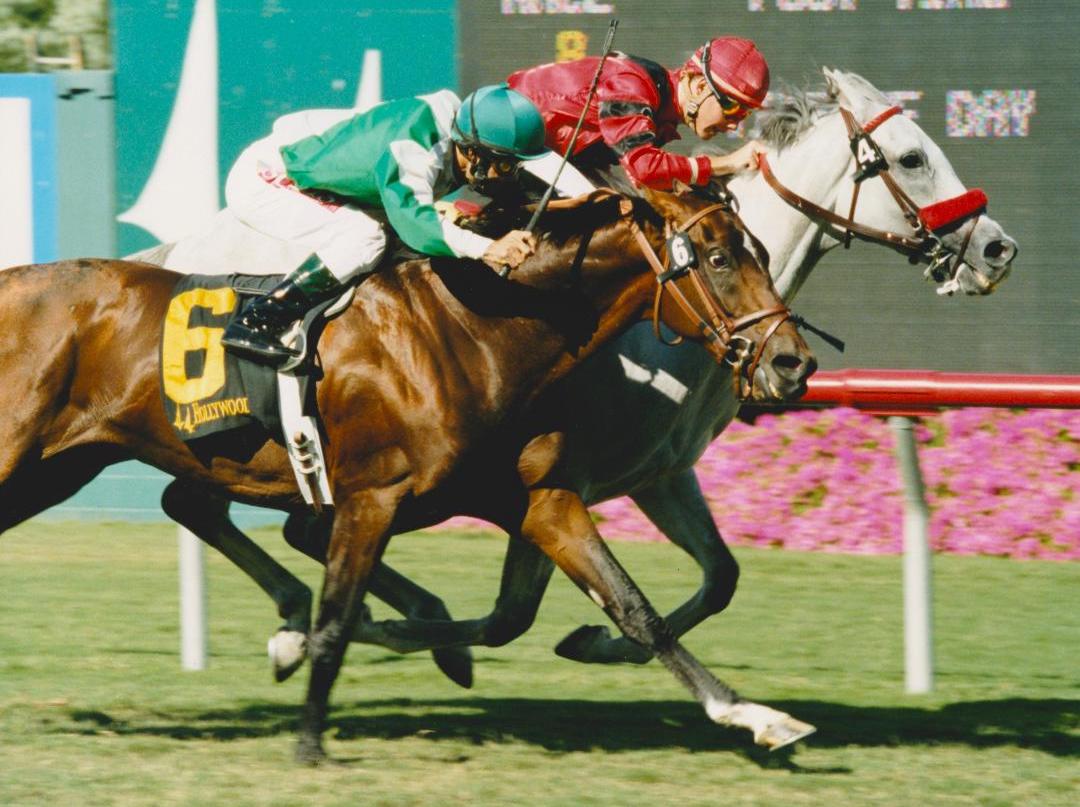 Dan’s Bet won the 1994 City of Miami Stakes over a field that included major stakes winners Val’s Prince, Diplomatic Jet, and Suave Prospect.
Dan’s Bet won the 1994 City of Miami Stakes over a field that included major stakes winners Val’s Prince, Diplomatic Jet, and Suave Prospect.
Breathtaking View won a small stakes at Monmouth Park before being sold to the Maktoum operation in Dubai, where he ran against the likes of Fantastic Light and High-Rise before commencing a second career as a British hurdler.
Then came Star Over The Bay, foaled at Four Horsemen’s on Feb. 5, 1998, a result of Lituya Bay’s first mating with Breeders’ Cup Mile winner Cozzene. By then, Cozzene already had sired Breeders’ Cup winners Alphabet Soup and Tikkanen, as well as Arlington Million winner Star Of Cozzene.
As a yearling, Star Over The Bay failed to make his $140,000 reserve at the 1999 Keeneland September sale. As a two-year-old, he went to the Keeneland April sale and went home to Four Horsemen’s again when his $230,000 reserve was not attained, then began training with John Salzman, Sr.
Salzman, a well-respected figure on the Mid-Atlantic circuit, had Star Over The Bay ready to run that July 2000. At the time, the stable star was another two-year-old by the name of Xtra Heat, who would go on to win her first six races, a championship at age three, and a place in the Hall of Fame.
Hardly precocious
Star Over The Bay was hardly that precocious, although he was pitched into three minor stakes events before he won a maiden race on the Gulfstream Park turf in his first start at three. After 10 more starts and a pair of allowance wins for Salzman, Star Over The Bay was switched to the stable of Tim Ritvo.
In March 2002, still racing for Ritvo and Four Horsemen’s, Star Over The Bay emerged from a poor showing in the Equalize Stakes at Gulfstream Park with a problem that kept him in the sidelines for more than a year.
Soon after his return, in May 2003, he was dropped into the claiming ranks. Over the next four months, he could have been taken for anywhere from $35,000 to $60,000 – but there were no takers.
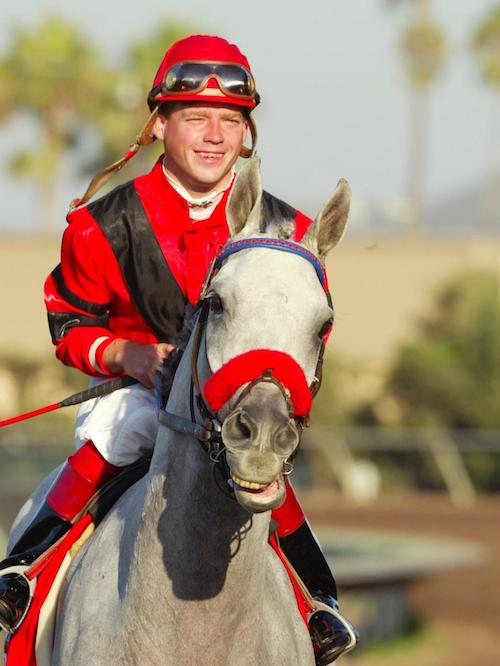 The second, spectacular chapter in the Star Over The Bay saga began in late 2003 when he was purchased privately by Patricia and Stephen Fitzpatrick on the recommendation of California-based trainer Vladimir Cerin. On Valentine’s Day of 2004, Star Over The Bay made his West Coast debut for $62,500 claiming price. He finished fourth, then came right back to win at the same level three weeks later.
The second, spectacular chapter in the Star Over The Bay saga began in late 2003 when he was purchased privately by Patricia and Stephen Fitzpatrick on the recommendation of California-based trainer Vladimir Cerin. On Valentine’s Day of 2004, Star Over The Bay made his West Coast debut for $62,500 claiming price. He finished fourth, then came right back to win at the same level three weeks later.
Clearly, Star Over The Bay was beginning to thrive for his new stable. On May 16, 2004, he was entered for a price tag of $80,000 going a mile on the grass at Hollywood Park. The risk seemed reasonable, since this was a six-year-old gelding who had won only five of 34 lifetime starts. But that risk did not account for the interest of Sean Gerson and his trainer, Mike Mitchell.
‘That’s why I’m calling’
“I’d been looking at a race called the Dallas Turf Cup at Lone Star Park,” Gerson said recently. “It didn’t seem like it took much to win it, and they offered a nice purse. So I get a call from Mike one day asking if I’ve noticed this horse, Star Over The Bay. I told him I had, but I’d only want to claim him if we ran him at Lone Star.”
Mitchell’s reply: “That’s why I’m calling.”
One month after the claim, Star Over The Bay was in Texas, carrying the hopes of his new owners in the $200,000 Dallas Turf Cup. Their number was legion. Gerson Racing included about 20 partners with small shares, along with Carl VanBurger and Landon Vaughn, two of Gerson’s racetrack acquaintances. Their horse finished second by a neck, caught only at the very end by local longshot Maysville Slew.
The result was encouraging. Star Over The Bay would have been eligible for any number of lesser West Coast events, but his people chose to toss him to the wolves in the Sunset Handicap at Hollywood Park on July 18, a mile-and-a-half turf test that had been won by the likes of John Henry, Exceller, Sirlad, and Sandpit.
For the Sunset, Star Over The Bay was reunited with Tyler Baze, the young sensation who had ridden the horse twice while trained by Cerin. Walking his beat on the front end, Star Over The Bay held off Continuously, the odds-on choice trained by Bobby Frankel, to win by a nose.
“I got into forming partnerships because I wanted to share the thrill of winning a race,” Gerson said. “The Sunset was my first Grade 1 win, and having all those people with the horse in the winner’s circle was the greatest day I’d ever had in racing.”
 The Sunset also let Baze put a cherry on top of the championship of the Hollywood Park summer meet. Only 21, he was riding for most of the major stables and winning graded stakes. However, he admits he was still learning every step of the way, and Star Over The Bay provided invaluable lessons.
The Sunset also let Baze put a cherry on top of the championship of the Hollywood Park summer meet. Only 21, he was riding for most of the major stables and winning graded stakes. However, he admits he was still learning every step of the way, and Star Over The Bay provided invaluable lessons.
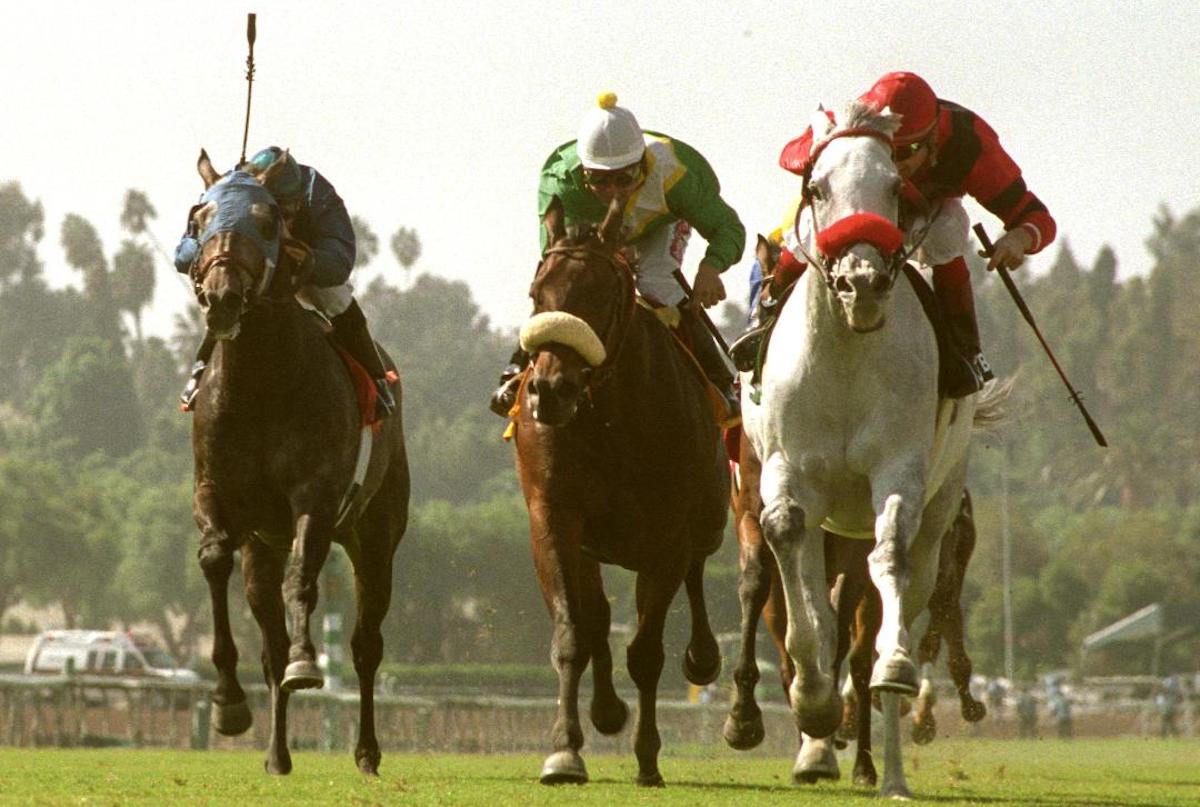 “He was a cool horse to ride,” Baze said. “His stride was amazing. He taught me a lot about listening to the horse, and about how to save a horse’s energy without discouraging them. I don’t really know how to explain it.”
“He was a cool horse to ride,” Baze said. “His stride was amazing. He taught me a lot about listening to the horse, and about how to save a horse’s energy without discouraging them. I don’t really know how to explain it.”
Then he did.
“Some horses will go at a faster pace than others while still reserving plenty of energy,” Baze said. “With him it didn’t matter what the clock said. If I tried to make him go the pace I might have preferred, it would have been a struggle, and he would have been using up energy in the struggle.
No better feeling
“There’s no better feeling than to be on a speed horse like him, and when you break, you’re already a length in front. They throw their ears forward, and you know they’re out there just having fun.”
Baze followed the script to perfection with Star Over The Bay in the Del Mar Handicap on Aug. 29 and the Clement L. Hirsch Memorial Turf Championship at Santa Anita on Oct. 3. His immediate victim in each race was Gary Tanaka’s Sarafan – by a neck and then three-quarters of a length – the same Sarafan who came within a nose of beating Falbrav in the 2002 Japan Cup.
At the end of 2004, Gerson and Mitchell felt obligated to give the Breeders’ Cup Turf a try with their streaking gray. So it was back to Lone Star Park, where the adventure began, only this time against an array of talent that included Kitten’s Joy, Powerscourt, and Better Talk Now.
When a torrential storm ripped through the area on the night before the race, Star Over the Bay lost all chance. Soft ground was not his friend, and Baze knew it.
“Don’t bet,” the jockey warned Gerson after getting a leg-up on his partner for the race.
Good advice. Star Over The Bay was able to set an easy pace on a long lead, but deep ground was taking its toll with every stride. By the time the field reached the final furlongs, the gray horse was spent. Baze geared him down, living to fight another day.
Three months later, Star Over The Bay was back in the spotlight to win his richest prize in the $500,000 Sunshine Millions Turf at Santa Anita, an event exclusively for Thoroughbreds from Florida and California.
His 2005 campaign continued at the end of March as topweight in the San Luis Rey Handicap, but for some reason he surrendered at the top of the stretch and was beaten three lengths, finishing fifth.
After the San Luis Rey, Gerson was alerted to the opportunity of an international event at the Singapore Turf Club, whose management was looking for participants from a variety of racing nations.
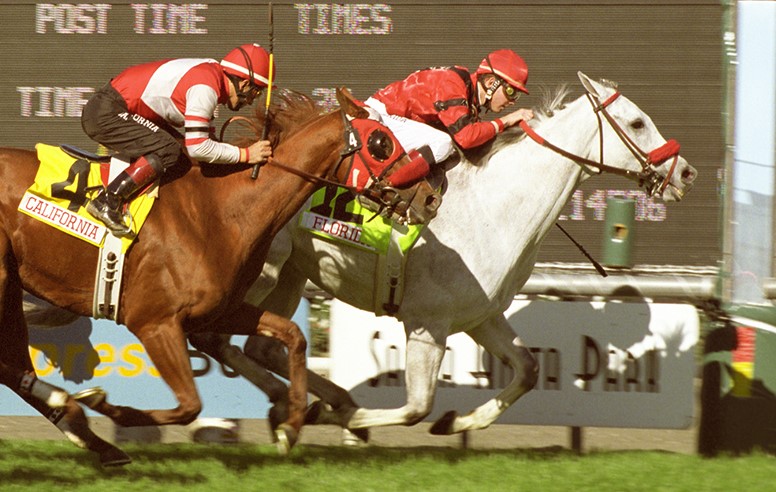 Such adventurous European trainers as Luca Cumani, Saeed bin Suroor, and Andreas Schutz had shown up in Singapore to win the race already, lending the event an air of legitimacy.
Such adventurous European trainers as Luca Cumani, Saeed bin Suroor, and Andreas Schutz had shown up in Singapore to win the race already, lending the event an air of legitimacy.
‘I thought we could win’
“I really wanted to go,” Gerson said. “I thought we could win.”
Worth $1.8m, the Singapore Airlines International Cup was scheduled for May 15, 2005 – one day shy of the anniversary of the date Star Over The Bay was claimed. Gerson got some pushback from partners, and Mitchell needed convincing. But the purse seemed ripe for the taking for an American speed horse.
The journey was not without its bumps. Gerson was alarmed when he beheld a turf course with a tall crop of grass very unlike the clipped California courses and asked for a reasonable mowing. He got it, but Gerson observed the mowing revealed a number of divots and small holes that had gone unnoticed beneath the tall grass.
The class of the assembled field was considerable, topped by Epalo, the defending champion from Germany, and Dubai Sheema Classic winner Phoenix Reach. There also was Mummify, a multiple G1 winner in Australia, and the formidable filly Alexander Goldrun, winner of the Prix de l’Opera and the Hong Kong Cup.
Even though it was a hot, humid night for the race, Baze was feeling good about his chances – until he got onto the track.
“The turf was kind of soft, it was one of the last races of the day, and it looked like nobody had tried to fill in a single divot,” Baze said. “It didn’t look like a good track to ride on.”
Star Over The Bay broke well from the number one stall and was immediately challenged by Epalo. Baze was forced to restrain his horse behind heels until he found his way into the clear around the first turn, to the outside of the pacesetter. They raced swiftly down the long back straight, reaching the 1,200-metre mark in just under 1:14.
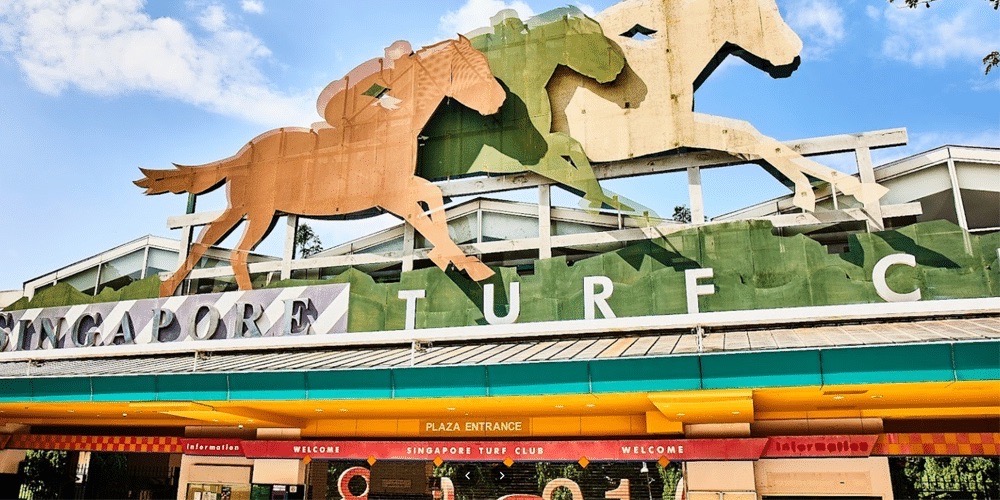 Such a pace should have played to the strength of Star Over The Bay, but at that point he was in the process of going wrong. Baze felt the first bad step as the far turn approached and immediately tried to slow the momentum of his big, strong horse. As the field skirted around them, Baze feared the worst, which was confirmed when he finally pulled his horse to a stop.
Such a pace should have played to the strength of Star Over The Bay, but at that point he was in the process of going wrong. Baze felt the first bad step as the far turn approached and immediately tried to slow the momentum of his big, strong horse. As the field skirted around them, Baze feared the worst, which was confirmed when he finally pulled his horse to a stop.
‘Put your saddle down’
“I jumped off him, had my saddle on my arm and was holding him when a guy pulled up in a car,” Baze said.
“I assumed he was the vet. He came over and grabbed him, said, ‘I’ve got him, jock. Go ahead and put your saddle down.’ I walked two steps away and heard, ‘Boom!’ He shot him with a pistol.”
“It hit me really hard,” Baze said. “To be honest, I don’t know how bad he broke down, or if they could have saved him. But I was just bawling. I’d never seen anything like that before. Believe me, it gave me nightmares.”
Euthanasia by gunshot was discarded by US racetracks decades ago. However, a bullet to the brain from trained personnel is still deemed acceptable by the American Association of Equine Practitioners and considered humane if done properly. The presumption is that no other alternative exists, and that the horse has been evaluated for any chances of survival.
The following day, a distraught Sean Gerson consulted with a sympathetic Singapore racing official about the disposition of the remains of Star Over The Bay.
“I wanted to take him home, have him cremated, something,” Gerson said. “I didn’t want to leave him there.”
Already gone
Decades later, the conversation is still vivid. “He’s already gone,” the official said.
“I know he’s gone,” Gerson said. “I just want to take him back.”
“No, he is gone,” the official said. “Rendered.”
Gerson was confused. In California, horses that died on the track were automatically subjected to an analytical necropsy.
“What does that mean?” Gerson said.
A second official was more explicit.
“When it happens,” he said, “the horse meat is fed to the lions in the zoo.”
Gerson was in shock.
“I wouldn’t think that’s the kind of thing you joke about, especially to someone connected to the horse,” he said. “After that, I couldn’t get out of that place fast enough.”
After dealing with the effects of a malignant brain tumor and surgery, Mike Mitchell died in 2015 at 66 as Del Mar’s all-time leader in wins and holder of 19 California training titles. Baze, now 41, is nearing 3,000 winners and almost $135 million earned by his mounts in a career that has survived a variety of injuries, most recently a broken bone in his hand sustained in June at Los Alamitos. He will be back in action at the Del Mar meet this summer.
Gerson lost some of his investors over the death of their horse, but Gerson Racing has continued, still in action and looking for another Star Over The Bay.
Gerson has a photo shrine at home of his blue-collar turf star, whose life ended in the Republic of Singapore, a small nation located just off the southern tip of the Malay peninsula bearing a name bestowed by an explorer who, as legend has it, was greeted there by majestic beasts emerging from the jungle.
The explorer christened the island Singapura, originally from Sanskrit, which in Malay means ‘lion city’.
• Read all Jay Hovdey's features in his Favorite Racehorses series
Riboletta: ‘She was beautiful and she loved to run’
Best Pal: ‘If there ever was a word to describe him, ‘honest’ would top the list’
Hill Rise: ‘He is why I’m here, still writing about horses half a century after he was born’
View the latest TRC Global Rankings for horses / jockeys / trainers / sires


